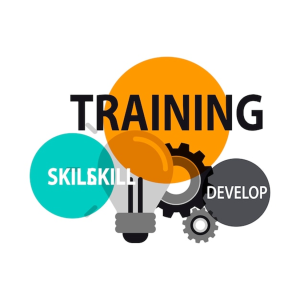In the fast-paced world of technology, innovation is the driving force that propels companies forward. Rapid prototyping has emerged as a game-changing technique that accelerates the innovation process in the UK tech industry. This agile approach to product development allows businesses to create tangible prototypes quickly, test their viability, and make necessary adjustments in record time. In this article, we’ll delve into the significance of rapid prototyping and how it’s reshaping the landscape of technological innovation in the UK.
Innovation is the lifeblood of the UK tech industry, and businesses are in a constant race to bring new and improved products to market. This has led to the adoption of various strategies, with rapid prototyping standing out as a beacon of agility and efficiency.
Understanding Rapid Prototyping
Rapid prototyping is a methodology that allows companies to create a preliminary model of their product quickly. This model serves as a tangible representation of the end product, offering stakeholders a glimpse into the final result.
Rapid Prototyping Techniques
Stereolithography (SLA)
One of the pioneering techniques, SLA involves creating a prototype by curing a liquid resin with a laser, layer by layer. It’s renowned for its precision and ability to create intricate designs.
Selective Laser Sintering (SLS)
SLS employs high-powered lasers to fuse powdered materials together, layer by layer. This technique is particularly valuable for creating functional prototypes and complex geometries.
Fused Deposition Modeling (FDM)
FDM is a widely used technique where the prototype is built by layering melted thermoplastic materials. It’s known for its speed and cost-effectiveness.
Benefits of Rapid Prototyping
Accelerated Product Development
Traditional product development can be a lengthy process, but rapid prototyping shatters those barriers. With prototypes produced in days instead of weeks, companies can iterate faster and bring products to market swiftly.
Cost Efficiency and Risk Reduction
By identifying flaws early in the development process, companies save substantial costs that would otherwise be spent on rectifying issues post-production. This approach significantly reduces risks associated with product launches.

Iterative Refinement
Rapid prototyping encourages an iterative approach to design. Feedback from testing can be incorporated immediately, leading to refined and superior end products.
Rapid Prototyping in the UK Tech Industry
Transforming Idea to Prototype
The UK tech industry is characterized by its innovative spirit, and rapid prototyping has become a conduit for turning visionary ideas into tangible prototypes.
Enhancing Collaboration and Communication
Rapid prototyping facilitates cross-functional collaboration. Teams can visually comprehend ideas, leading to enhanced communication and reduced misunderstandings.
Challenges and Limitations
Material Limitations
The range of materials available for rapid prototyping can be limiting. While many prototypes can mimic the properties of the final product, certain materials may not be viable.
Complexity Management
Intricate designs can pose a challenge for some rapid prototyping techniques. Maintaining structural integrity while pushing the boundaries of design can be complex.

Real-world Success Stories
Automotive Advancements
Leading automotive companies in the UK have harnessed rapid prototyping to accelerate the development of vehicle components, leading to safer and more efficient cars.
Medical Breakthroughs
Rapid prototyping has revolutionized medical device development. Custom implants and prosthetics are now feasible with greater speed and accuracy.
Future Implications and Trends
Integration of AI and Rapid Prototyping
The synergy between AI and rapid prototyping holds immense potential. AI algorithms can analyze prototypes’ performance data, enabling informed design decisions.
On-demand Prototyping Services
The rise of on-demand prototyping services democratizes access to rapid prototyping technology, leveling the playing field for startups and small businesses.
Overcoming Barriers to Adoption
Skills and Training
Widespread adoption requires a skilled workforce. Training programs that equip professionals with rapid prototyping skills are crucial.

Cultural Shifts
Embracing rapid prototyping requires a cultural shift, where failure is viewed as a stepping stone to success. This mindset shift is imperative for innovation.
Rapid prototyping is propelling the UK tech industry into a new era of innovation. By expediting product development, reducing costs, and enhancing collaboration, this methodology is rewriting the rules of innovation.
Frequently Asked Questions
What industries benefit most from rapid prototyping?
Rapid prototyping benefits a wide range of industries, including automotive, aerospace, healthcare, and consumer electronics.
How does rapid prototyping boost innovation?
Rapid prototyping accelerates innovation by enabling faster iteration, reducing time-to-market, and fostering collaboration.
Is rapid prototyping only suitable for physical products?
While rapid prototyping is often associated with physical products, its principles can be adapted for software and digital applications.
What role does collaboration play in rapid prototyping?
Collaboration is integral to rapid prototyping as it brings together diverse expertise, leading to more refined and successful prototypes.
Can rapid prototyping lead to cost savings?
Absolutely. Rapid prototyping minimizes post-production fixes, reduces the likelihood of expensive recalls, and accelerates revenue generation.

